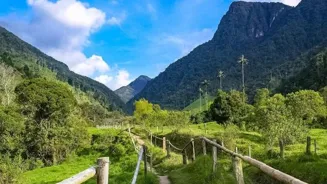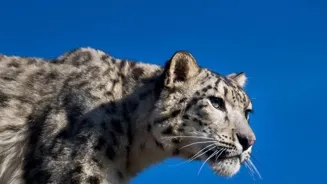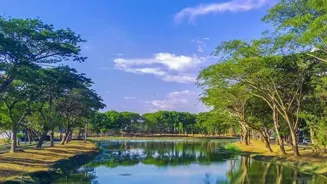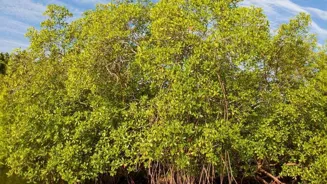Exploring the Unique Biodiversity of the Western Ghats: 10 Must-Know Species. Dive into the fascinating world of rare flora and fauna in this biodiversity hotspot!
The Western Ghats, a UNESCO World Heritage
Site, is a mountain range running parallel to the western coast of India. It's a biodiversity hotspot, meaning it has a large number of plant and animal species found nowhere else on Earth.
This makes the Western Ghats incredibly important for conservation and a fascinating place to explore. Let's take a look at 10 unique species that call this place home.
Endemic Lion-tailed Macaque faces habitat loss in Western Ghats
First off is the Lion-tailed Macaque. This monkey is easily recognized by the silver-white mane surrounding its face, making it look like a miniature lion. They are endemic to the Western Ghats, meaning they are found only here.
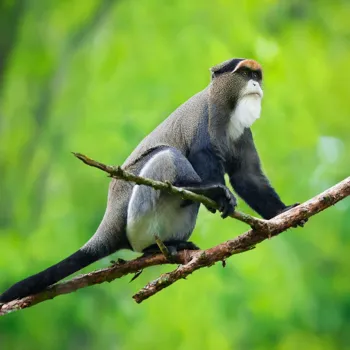
These monkeys are arboreal, so they spend most of their time in the upper canopy of rainforests. Sadly, their habitat is shrinking due to deforestation.
Nilgiri Tahr: Endangered goat-antelope expert in steep terrain
Next, the Nilgiri Tahr, a stocky goat-antelope. They are experts at navigating the steep rocky slopes of the Nilgiri Hills. Their sure-footedness helps them survive in this challenging terrain. Historically, they were hunted extensively, but conservation efforts have helped increase their numbers.
Though efforts have been made they remain endangered.
Malabar Pit Viper: Colorful snake in Western Ghats, controls rodents
Then we have the Malabar Pit Viper, a beautifully colored snake. It's found in the dense forests of the Western Ghats. This is a venomous snake, but it is not aggressive unless threatened. Its camouflage is so excellent, it can be difficult to spot among the leaves.
This snake plays a significant role in controlling rodent populations.
Anaimalai Flying Frog glides with webbed feet, blending in the forest
The Anaimalai Flying Frog is an amazing amphibian with large webbed feet. This allows it to glide between trees. It doesn't actually fly, but gliding is a useful way to escape predators and move through the forest. Their bright green color helps them blend in with the surrounding foliage.
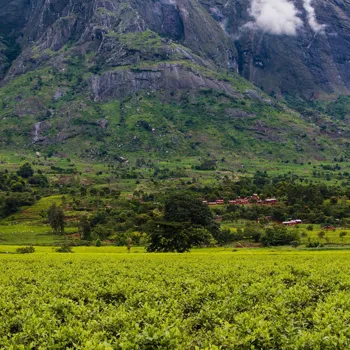
They are another species unique to the Western Ghats.
Unusual Purple Frog in the Ghats intrigues scientists
Next is the Purple Frog. This frog looks quite different from your typical frog. It has a bloated body and a pointed snout. It spends most of its life underground. Only emerging during the monsoon season to breed. Its unusual appearance and lifestyle have made it a subject of scientific curiosity.
This species highlights how unique the Ghats are.
Great Hornbill: Key seed disperser and cultural symbol facing habitat loss
The Great Hornbill is easily identified by its large size and bright yellow beak. A prominent casque sits on top of the beak. These birds are important seed dispersers in the forest. This plays a key role in maintaining the forest ecosystem.
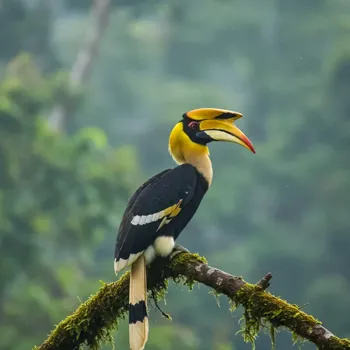
They are also culturally significant for many indigenous communities. Loss of habitat threatens their survival.
Biodiversity hotspot in Western Ghats supports unique species
The biodiversity hotspot supports a lot of species. The Lion-tailed Macaque is endemic to the Western Ghats that faces habitat loss. Nilgiri Tahr are experts at navigating steep, rocky landscapes. The Malabar Pit Viper exhibits excellent camouflage for survival.
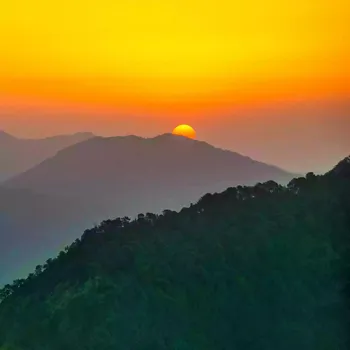
Anaimalai Flying Frog use webbed feet to glide between trees. Purple Frog spends time underground and only merges during the monsoon season. Great Hornbill plays an important role in maintaining forest ecosystem.
Red Sand Boa in India vital for ecosystem; often killed due to mistaken identity
The Red Sand Boa is a non-venomous snake. It is often mistaken for the venomous Russell's Viper. This has led to it being needlessly killed. It plays a role in controlling rodent populations. It, too, is unique to India. Its presence indicates a healthy ecosystem.
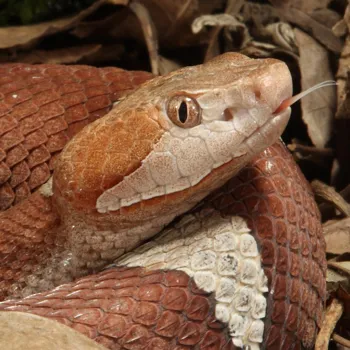
Spreading awareness about its true nature is key to its conservation.
Ceylon Frogmouth, a master of camouflage, fascinating nocturnal bird
Next, the Ceylon Frogmouth a nocturnal bird. It expertly camouflages itself to look like a branch. This helps it avoid detection by predators. These birds are masters of disguise. Their unique appearance and behavior make them a fascinating species to observe.
Seeing one in person is a memorable experience. This can be difficult given their camouflage.
Malabar Giant Squirrel: Large, colorful, agile tree-dweller
Then we have the Malabar Giant Squirrel. As the name suggests, it's a massive squirrel, much bigger than the ones you might see in your garden. These squirrels are known for their colorful fur that gives them a striking look. They are agile climbers and can leap from tree to tree with ease.
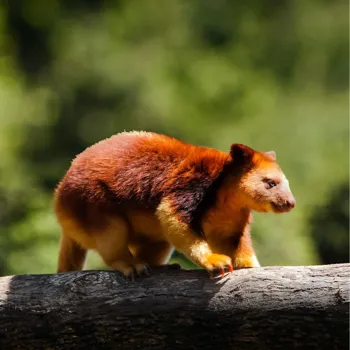
Seeing one in action is a sight to behold.
Neelakurinji flower blooms every 12 years, a stunning purple sight attracting tourists
Last but not least is the endemic flora, the Neelakurinji flower. It blooms only once every 12 years. This turns the hillsides a stunning shade of purple. The mass blooming is a popular tourist attraction. The sight is truly breathtaking. It is a reminder of the natural wonders present in India.
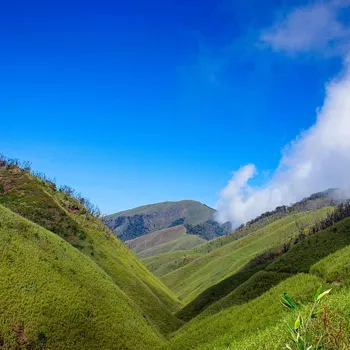
Protecting these unique ecosystems is crucial for future generations.
Unique species in Western Ghats need protection for future
The species such as Red Sand Boa, which is non-venomous, is mistakenly killed. Ceylon Frogmouth is a nocturnal bird which has the ability to camouflage that looks like a branch. The Malabar Giant Squirrel is known for colorful fur.
Neelakurinji flower, a flora, blooms once every 12 years turning hills purple. Protecting this unique ecosystem is a need for future generation,
Western Ghats: Biodiversity treasure, vital for ecosystem balance
The Western Ghats are not just a beautiful landscape. They are a treasure trove of biodiversity. Each of these species, and the countless others that live here, plays a vital role in maintaining the delicate balance of the ecosystem. By understanding and appreciating these unique creatures.
We can help protect them for future generations.
Conserving unique ecosystem for future generations through awareness
Conserving this unique ecosystem is an important endeavor for the future. It will help the future generation and the wildlife to be a part of the diverse ecological system. The beauty and the serenity of ghats can be maintained with the help of awareness and spreading the knowledge.
Conserving Western Ghats through various strategies
Protecting the Western Ghats and its inhabitants requires a multi-faceted approach. This includes strengthening existing protected areas, combating deforestation and poaching, and promoting sustainable tourism practices.
Furthermore, educating local communities about the importance of biodiversity conservation is crucial. Their involvement is essential for long-term success.
Effective strategies for Western Ghats conservation include community involvement and eco-tourism
Effective conservation strategies needed to protect the Western Ghats. These strategies consist of strengthening protected areas, deforestation management, and eco tourism. Local communities are required to promote biodiversity conservation programs in their areas.
Local communities involvement assures long term success.
Research and monitoring inform conservation in Western Ghats
Research and monitoring are also vital, as they help us to better understand the complex dynamics of the Western Ghats ecosystem. This knowledge can inform conservation efforts and ensure that they are effective.
By investing in research and monitoring we are investing in the future of this biodiversity hotspot.
Consistent research and monitoring for effective conservation strategies
There should be consistent research and monitoring of ecological dynamics to the public. Effective conservation strategies can be implemented efficiently. Involvement in research also helps. This can assure future generations to witness the habitat.
AI Generated Content. Glance/InMobi shall have no liability for the content



